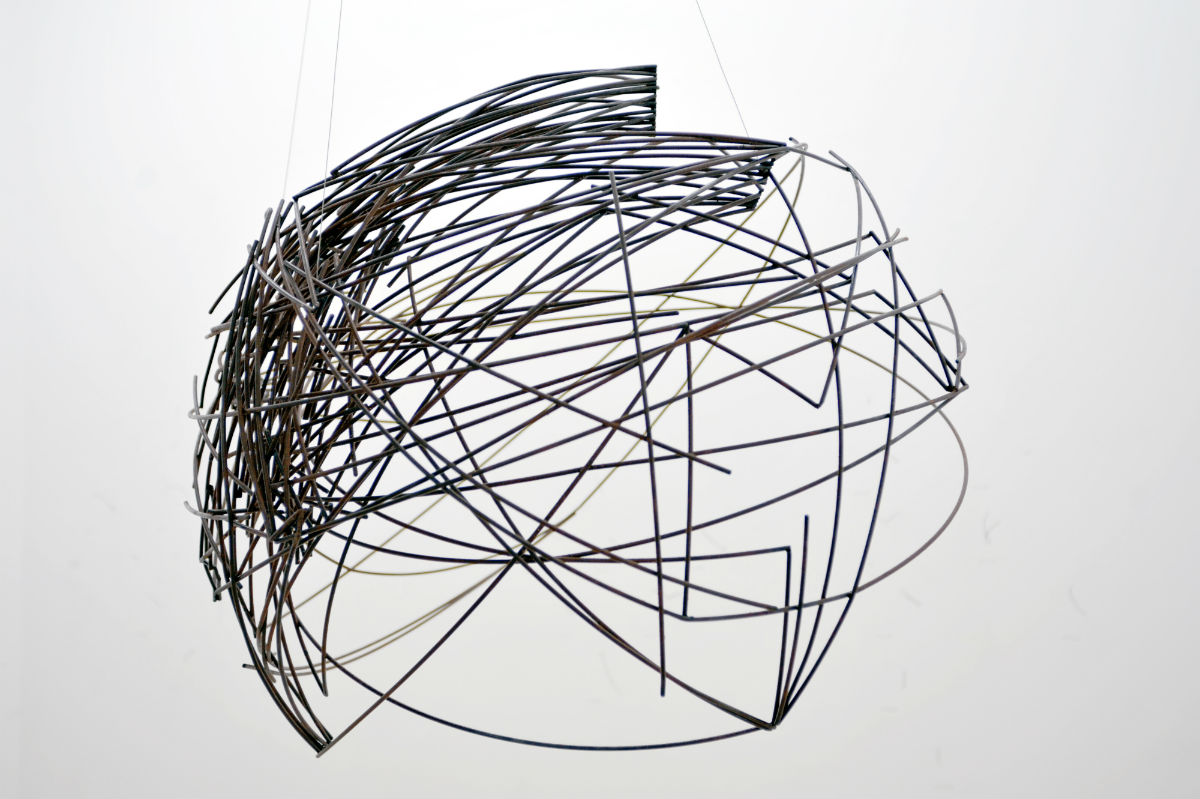MIT Puts Spam in an Art Gallery with “I Must First Apologize”

Joana Hadjithomas and Khalil Joreige, Geometry of Space, 2014/Photo courtesy the artists and In Situ/Fabienne Leclerc (Paris), CRG Gallery (New York), The Third Line (Dubai)
Email spam is something that most of us swiftly nuke from our inboxes. But for Joana Hadjithomas and Khalil Joreige, spam is art.
Their new exhibit, “I Must First Apologize…”—which opened this past week at the MIT List Visual Arts Center—examines the history of online spam, through film, sculpture, photography, and installation art. Included in the exhibit are such works as The Geometry of Space (pictured above), a sculpture that represents the global map of a year’s worth of spam.
To create this exhibit, the two Lebanese artists have been collecting and archiving email spam since 1999. And not just any spam, but one kind in particular.
You’re no doubt familiar with the form: “My dear this is for real, Please get back to me,” it begins. It’s a plea for help from halfway across the world, but it’s also a promise that you—yes, you—could make thousands, even millions of dollars, “100% risk free.” All that’s required is your trust…and your bank account.
Preposterous? Perhaps. But many still succumb to the lure every year, with an estimated $12.7 billion swindled out of unsuspecting marks in 2013.
The victims, who often do not report the crime out of shame, may lose far more than money: In 2004, one Internet scam victim apparently committed suicide by setting himself on fire. As the BBC reported, the man’s body “was discovered in a field in Fen Ditton, Cambridgeshire, on his 48th birthday, days after he thought he had won $1.2 million in an Internet lottery,” a can of gasoline and matches lying nearby.

Excerpt of cover artwork from Rumors of the World
While the medium of the Internet scam may be relatively recent, there’s nothing new about it. As Hadjithomas and Joreige point out, the predecessor to this kind of advance-fee con (sometimes known as 419 fraud, after the fraud designation in Nigeria’s criminal code) stretches back as far as the late 18th century, to the aftermath of the French Revolution. It’s had many names, including the Spanish Prisoner trick and, before that, the Jerusalem Letter.
According to Finn Brunton, the author of Spam: A Shadow History of the Internet, the original Spanish Prisoner scam went like this: “A letter arrived describing an aristocrat in exile…who in escaping from revolutionary violence had thrown a chest full of jewels into a lake. His faithful servant, now writing this heartfelt letter, had come back to retrieve it and unfortunately ended up in prison.” If you helped recover the loot, the letter-writer assured, you would be entitled to some of the spoils. The tactic was effective enough to snooker 20 percent of its recipients, claimed Eugène Vidocq, a French criminal who later became a detective.
But the swindle didn’t earn its “Spanish Prisoner” nickname until a century later, during the Spanish-American War. With turmoil in Havana and Madrid splashed all over the newspaper headlines, scammers found success posing as jailed Spanish military figures begging for help with recovering their “buried fortune“—a tale of woe plausible enough to beguile.
That’s the thing about this con: It survives by its message mutating to reflect current events. “What this suggests,” Brunton writes, “is that for all the ways that technology and globalization have changed our world, some things have changed not at all.” In other words, the digital age may be new to humanity, but greed is eternal.
Hadjithomas and Joreige found a wealth of information about our world encoded into the DNA of their spam hoard. “We collected these scams without really knowing why, at first,” the artists say. But in sifting through their collection, narratives began to emerge:
When they are read carefully, these collected scams tell a history of these past few years: the conflicts, wars, shifts, global economic evolutions, fluctuating financial values, raw materials, religious extremism, political turmoil, and even environmental disasters… These virtual archives outline a cartography of conflicts, a symptom of the state of the world and complex relationships motivated by colonial ideologies between the North and the South, and at the same time remain a space for singular encounters and poetic experiences.
Their exhibit, now on view through April, is presented in tandem with The Rumors of the World: Rethinking Trust in the Age of the Internet, a new publication edited by Omar Kholeif.
Joana Hadjithomas and Khalil Joreige’s “I Must First Apologize…,” February 19-April 17, MIT List Visual Arts Center, 20 Ames St., Building E15 (Atrium level), Cambridge, 617-253-4680, listart.mit.edu.


